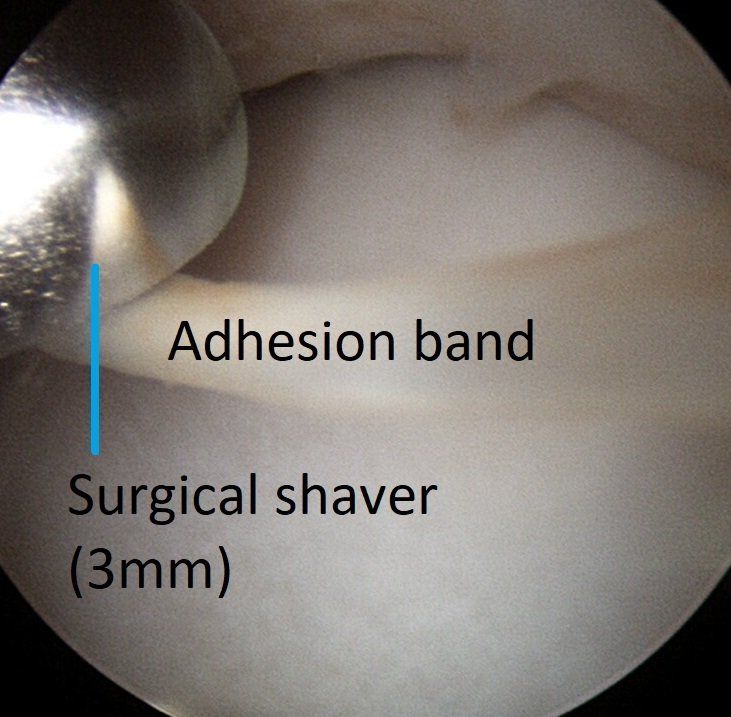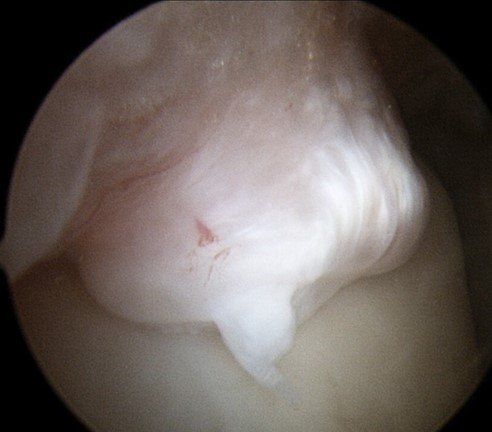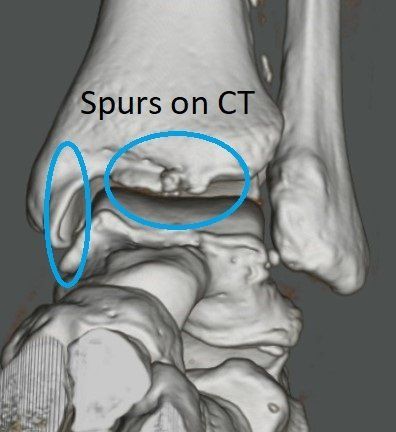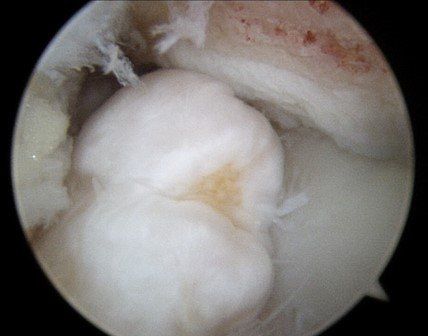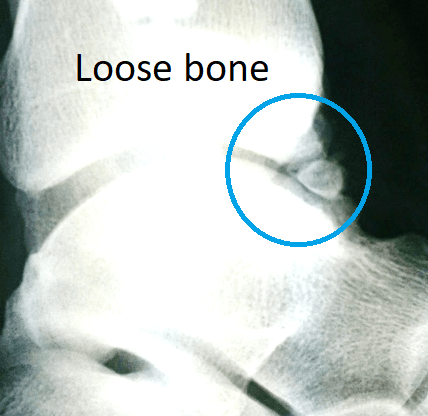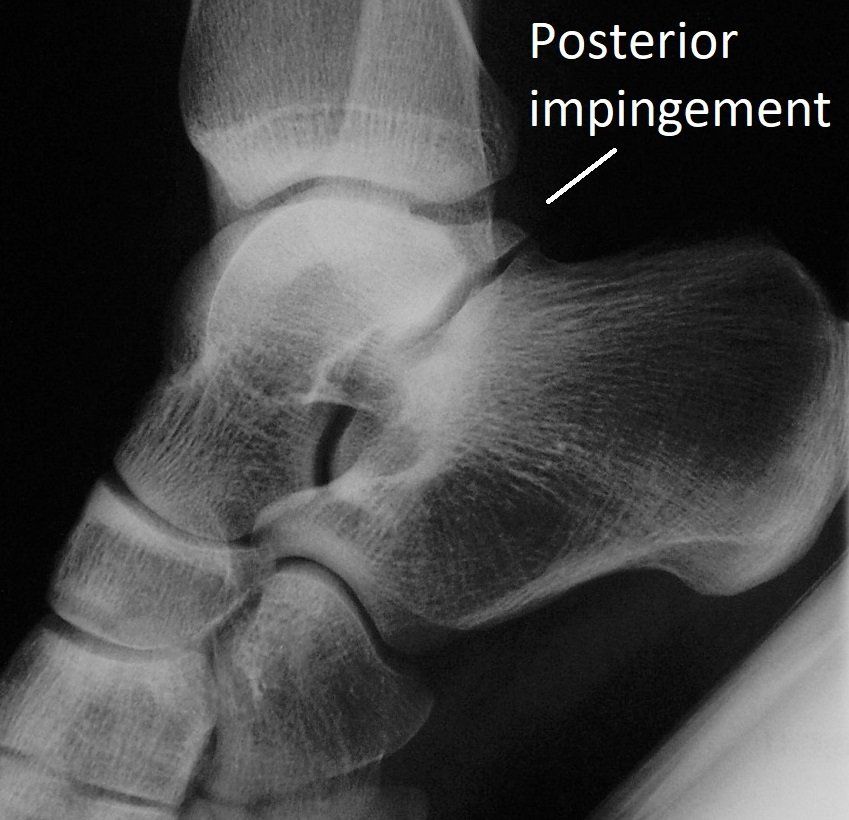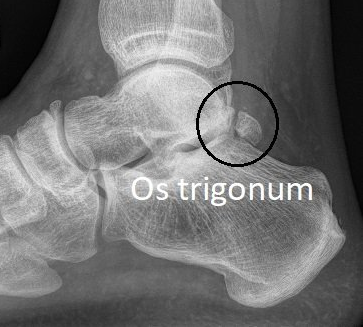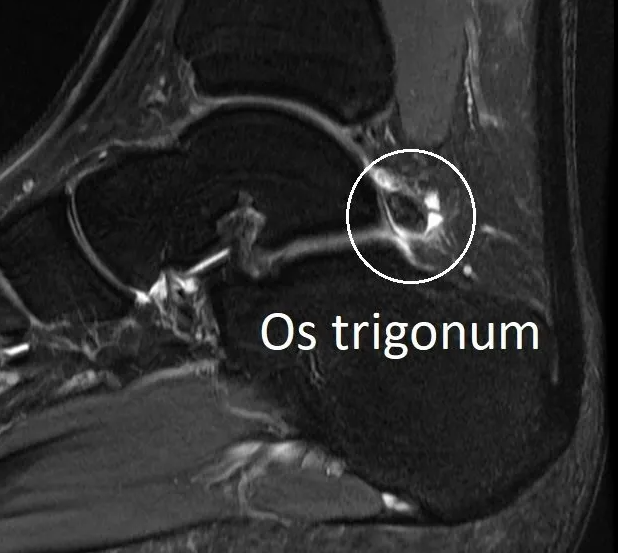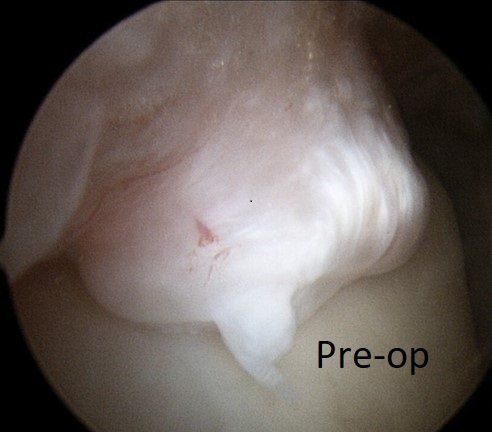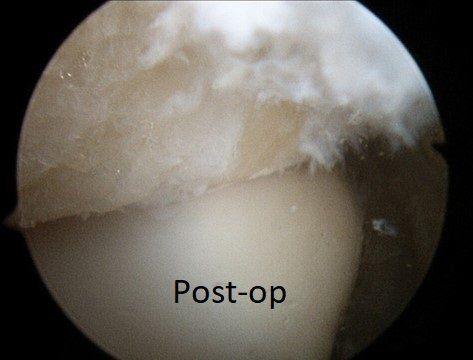Ankle Spurs and Impingement (Pinching)
What is Ankle Impingement?
Ankle impingement is painful limitation of movement due to "pinching" between the soft tissues and bones of the ankle.
Types of Ankle Impingement
Impingement can be due to soft tissue
or bone spurs. Usually both are involved.
Front of (anterior) ankle impingement is most common. The inner (medial) and back of (posterior) ankle are less commonly involved.
Anterior ankle impingement
Anterior ankle impingement
is often seen in people playing kicking sports, following ankle sprain and in early ankle osteo-arthritis. Forced upwards ankle movement (dorsi-flexion) causes front of ankle pinching and pain.
Causes include (see images below):
- scar tissue, adhesions and inflammation (synovitis)
- bone spurs from the tibia and talus bones
- loose bone fragment(s).
An uncommon complication of long-term antero-medial bony impingement is medial malleolar stress fracture.
Posterior ankle impingement
Posterior ankle impingement
is more common in people:
- standing on tip-toes - ballet dancers and football rucks
- landing with the foot bent down - cricket fast bowlers.
This plantar-flexed position
can pinch soft tissue at the back of the ankle (see images below).
- 5% of people are born with an extra bone at the back of the ankle called an os trigonum. This makes posterior impingement more likely.
Postero-medial ankle impingement
(behind the medial malleolus):
- Can occur after a significant ankle sprain.
- Scarring accumulates in the medial ankle ligament (deep deltoid = PoMI lesion). This causes postero-medial ankle pain.
Symptoms of Ankle Impingement
The most common symptoms of ankle impingement are:
- pain (at the front or back of ankle)
- limited range of motion.
Climbing upstairs, squatting and knee-to-wall calf stretches (forced dorsi-flexion) make anterior ankle impingement pain worse.
Standing on tip-toes and other plantar-flexion exercises make posterior ankle impingement pain worse.
Diagnosis of Ankle Impingement
The diagnosis of ankle impingement is made after:
- taking a complete medical and activity history
- examining of the ankle through its full range of motion. The point of maximum tenderness is usually where the tissues are being pinched
- investigations (X-ray, CT or MRI).
These investigations determine if the impingement is due to bone spurs, loose bone fragments, arthritis or just soft tissue scarring.
Treatment of Ankle Impingement
Non-surgical treatment
Treatment may involve:
- rest and change in activity
- anti-inflammatory medications
- rocker sole soles (Hoka, Skechers, MBT, etc)
- temporary use of a "moon-boot" (uncommon)
- cortisone injections (50 to 80% successful, but recurrence of pain is common).
Surgical treatment of ankle impingement
When symptoms persist, ankle arthroscopy is used to "clean-out" the ankle. Occasionally, the ankle needs to be opened to access deep scar tissue or very large spurs and bone fragments.
This procedure removes:
- scar tissue and inflammation (synovitis)
- bone spurs (see images below)
- loose bone and cartilage fragments.
Surgery helps 85%
of people with ankle impingement but cannot cure ankle arthritis. Recurrence of spurs occurs in 10% of people over time.
Physiotherapy
is often recommended to regain ankle flexibility after surgery.
See Ankle Arthroscopy under the TREATMENTS menu for more information.



